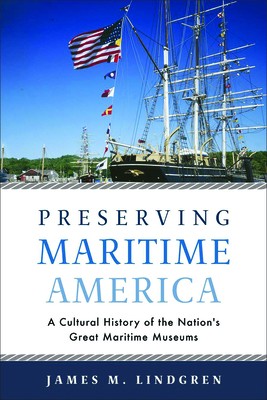
- We will send in 10–14 business days.
- Author: James M Lindgren
- Publisher: University of Massachusetts Press
- ISBN-10: 1625344635
- ISBN-13: 9781625344632
- Format: 15.2 x 22.6 x 2.5 cm, minkšti viršeliai
- Language: English
- SAVE -10% with code: EXTRA
Reviews
Description
The United States has long been dependent on the seas, but Americans know little about their maritime history. While Britain and other countries have established national museums to nurture their seagoing traditions, America has left that responsibility to private institutions. In this first-of-its-kind history, James M. Lindgren focuses on a half-dozen of these great museums, ranging from Salem's East India Marine Society, founded in 1799, to San Francisco's Maritime Museum and New York's South Street Seaport Museum, which were established in recent decades.
Begun by activists with unique agendas-whether overseas empire, economic redevelopment, or cultural preservation-these museums have displayed the nation's complex interrelationship with the sea. Yet they all faced chronic shortfalls, as policymakers, corporations, and everyday citizens failed to appreciate the oceans' formative environment. Preserving Maritime America shows how these institutions shifted course to remain solvent and relevant and demonstrates how their stories tell of the nation's rise and decline as a commercial maritime power.EXTRA 10 % discount with code: EXTRA
The promotion ends in 22d.00:13:17
The discount code is valid when purchasing from 10 €. Discounts do not stack.
- Author: James M Lindgren
- Publisher: University of Massachusetts Press
- ISBN-10: 1625344635
- ISBN-13: 9781625344632
- Format: 15.2 x 22.6 x 2.5 cm, minkšti viršeliai
- Language: English English
The United States has long been dependent on the seas, but Americans know little about their maritime history. While Britain and other countries have established national museums to nurture their seagoing traditions, America has left that responsibility to private institutions. In this first-of-its-kind history, James M. Lindgren focuses on a half-dozen of these great museums, ranging from Salem's East India Marine Society, founded in 1799, to San Francisco's Maritime Museum and New York's South Street Seaport Museum, which were established in recent decades.
Begun by activists with unique agendas-whether overseas empire, economic redevelopment, or cultural preservation-these museums have displayed the nation's complex interrelationship with the sea. Yet they all faced chronic shortfalls, as policymakers, corporations, and everyday citizens failed to appreciate the oceans' formative environment. Preserving Maritime America shows how these institutions shifted course to remain solvent and relevant and demonstrates how their stories tell of the nation's rise and decline as a commercial maritime power.

Reviews